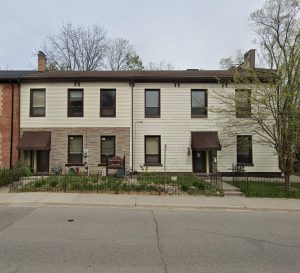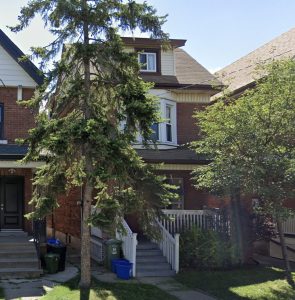Bringing Clarity to Building Code Compliance
Advocating for our clients, with their best interests in mind is how we operate. Here are examples.

Consistent application of Codes
Project: Retirement home addition
Project type: Institutional Construction
Address: 35-37 Ogilvie Street, Hamilton (Dundas), Ontario
Facility Issue
The original building permit application for this project was rejected, causing construction delays, based on the snow load values for the roof trusses being installed. Snow load values required for the design of buildings under the Ontario Building Code must conform to the values provided in Supplementary Standard SB-1. The City had developed a local policy of setting different load factors for various areas of the city — snow loads not found within Supplementary Standard SB-1. In this case, the City determined that the roof trusses proposed did not meet these local requirements, even though they met all requirements of the Ontario Building Code.
Weekes Engineering took up the issue with the Building Code Commission, claiming that these local snow load requirements were illegal. At issue was the consistent and predictable interpretation of the Building Code.
Outcome
The challenge before the Building Code Commission was successful. In their ruling (No. 13-12-1340), the Commission concluded that “a design for an addition using Supplementary Standard SB-1 provides sufficiency of compliance” for this case. They agreed with our opinion that specified design values are minimum values under which a building permit application is reviewed and deemed compliant. The design in the original permit application met that requirement. The City of Hamilton snow load policy was found to have no legal merit under the provision of the Building Code Act. Only snow loads specified in the Ontario Building Code apply, therefore the City of Hamilton snow loads were found to be unenforceable in this instance.
“We fight for what is right under the law; for clarity of expectations and consistent application of codes,” said Principal, Greg Weekes, who appeared before the Commission on behalf of his client. “The public’s ability to have clear expectations with respect to building design, construction, approval time frames, and overall transparency is important,” he continued.

An illegal change made legitimate
Project: Residential renovation
Project type: Residential construction
Address: 26 Garfield Ave North, Hamilton, Ontario
Facility Issue
The original building permit application was rejected, based on the renovation of an upper floor window. Previous owners had illegally and incorrectly reduced the size of an upper floor window; they had not received a building permit for it and the work was not done properly. The application called for restoring the window to its original, full size. The City had determined that the window was being enlarged from its existing size — even though the existing smaller size was illegally made — and newer building code restrictions for the larger window opening had to be applied.
Weekes Engineering took up the issue with the Building Code Commission on behalf of our client. We argued that an illegal renovation cannot be deemed as ‘existing’ as it had not been legally established. We said that to accept an illegal renovation as existing, is to confirm the illegal works and make them legitimate. We argued that one should not be able to illegally renovate and then use the ‘existing’ illegal work as a baseline for a future building permit application.
Outcome
Unfortunately, the Commission ruled in favour of the City. In the decision, the adjudicators felt it would be possible to work with the smaller opening and still have a successful renovation. However, we still feel that this was an important principle worth defending: that an illegal renovation, especially one that was not done properly, cannot become the basis for “existing” when applying for a new permit.
